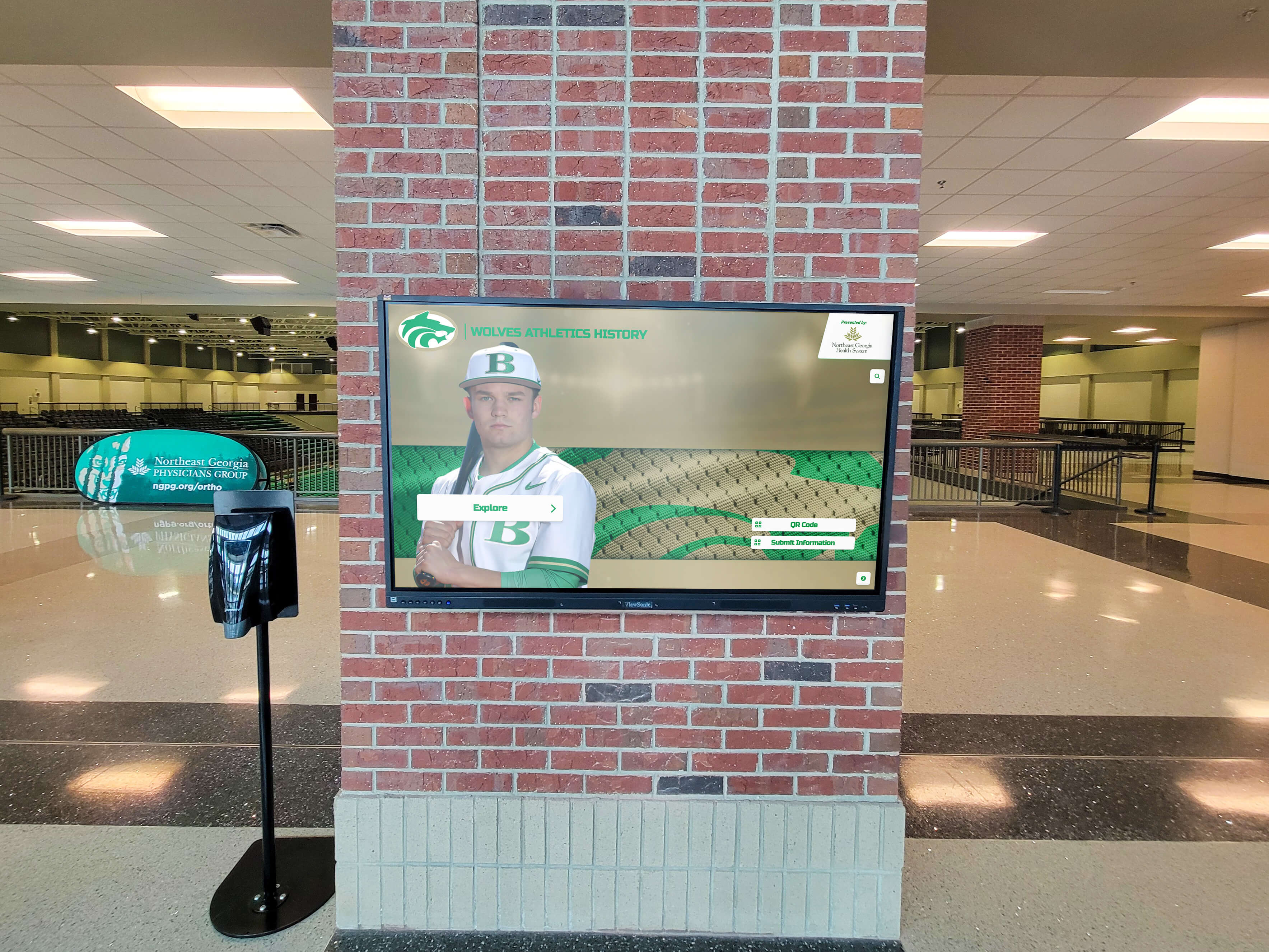Schools, athletic programs, civic organizations, and community institutions depend on the generous support of local businesses, community partners, and individual sponsors who invest resources, time, and expertise to advance their missions. Yet many organizations struggle to recognize these vital partnerships effectively—relying on static signage that becomes outdated, limited physical space that restricts how many supporters can be acknowledged, or scattered recognition approaches that fail to demonstrate the full scope of community investment.
When community partnerships and local sponsors receive appropriate, visible recognition, powerful benefits emerge. Existing sponsors feel valued and renew commitments at higher rates. Prospective partners see evidence of community support and feel confident joining. Organizations build reputations as good stewards of community investment. Most importantly, recognition strengthens the reciprocal relationships between institutions and communities, creating sustainable support ecosystems that benefit everyone involved.
Why Showcasing Community Partnerships Matters
Recognition of community partnerships and local sponsors serves strategic purposes beyond basic courtesy. Visible acknowledgment increases sponsor retention by 40-60% according to partnership research, inspires new sponsors by demonstrating community confidence, creates accountability showing how support translates to impact, strengthens community identity by highlighting shared investment in local institutions, and builds sustainable funding models less dependent on single sources. Solutions like Rocket Alumni Solutions help organizations create comprehensive recognition systems that honor community partners while strengthening relationships that sustain programs across generations.
Understanding Community Partnerships and Sponsor Recognition
Effective recognition of community partnerships requires understanding the diverse types of support organizations receive and the strategic value proper acknowledgment creates.
Types of Community Partnerships Worth Recognizing
Comprehensive recognition programs honor varied forms of community support rather than limiting acknowledgment to financial contributions alone.
Business and Corporate Sponsors: Local businesses provide essential support through financial sponsorships ranging from small annual contributions to major multi-year commitments, in-kind donations of goods, services, or facilities, volunteer employee time for events and programs, matching gift programs amplifying individual donations, and promotional partnerships spreading awareness. These partnerships deserve recognition proportional to their investment and impact.
Community Organization Partnerships: Nonprofit organizations, service clubs, faith communities, and civic groups support institutions through collaborative programming sharing resources and expertise, volunteer mobilization providing essential person-power, facility sharing reducing operational costs, joint fundraising initiatives expanding donor reach, and advocacy support strengthening community voice. Recognizing these partnerships acknowledges the collaborative ecosystem sustaining community vitality.

Individual Community Champions: Beyond organizational support, individual community members make profound differences through volunteer leadership serving on boards and committees, professional expertise provided pro bono, advocacy and promotion within networks, mentorship guiding younger community members, and legacy gifts establishing enduring support. Individual volunteer recognition ensures these essential contributions receive appropriate visibility alongside organizational partnerships.
Government and Public Agency Partnerships: Municipal governments, county organizations, state agencies, and federal programs support community institutions through grants and funding allocations, facility access and infrastructure support, program partnerships addressing community needs, regulatory assistance navigating requirements, and promotional partnerships amplifying reach. Public sector partnerships often go unrecognized despite their significant impact.
The Strategic Value of Partnership Recognition
Organizations that prioritize partnership and sponsor recognition see measurable returns justifying the investment required for quality programs.
Increased Sponsorship Retention and Growth: When sponsors receive meaningful recognition, renewal rates improve dramatically. Research from the Association of Fundraising Professionals shows that recognized sponsors renew at 75-85% rates compared to 45-55% for those receiving minimal acknowledgment. Beyond renewal, satisfied sponsors frequently increase commitment levels when they see their support properly valued and showcased to the community.
Enhanced Recruitment of New Partners: Visible recognition of existing partnerships creates social proof that attracts new sponsors. Prospective partners see evidence that your organization values supporters, maintains relationships beyond initial solicitation, and provides visibility for their community investment. This demonstration of partnership stewardship significantly reduces barriers to new sponsor acquisition.
Strengthened Community Relationships: Recognition programs that celebrate partnerships reinforce that institutions value community investment and operate as part of broader ecosystems rather than in isolation. This acknowledgment strengthens social capital, builds goodwill that sustains organizations through challenges, and creates positive reputation effects attracting students, members, donors, and volunteers beyond sponsorship relationships.
Accountability and Transparency: Public recognition of partnerships demonstrates how community support enables programming, facilities, and services that might otherwise be impossible. This transparency builds public confidence while creating accountability ensuring organizations honor commitments to sponsors and deliver on promises made during solicitation.
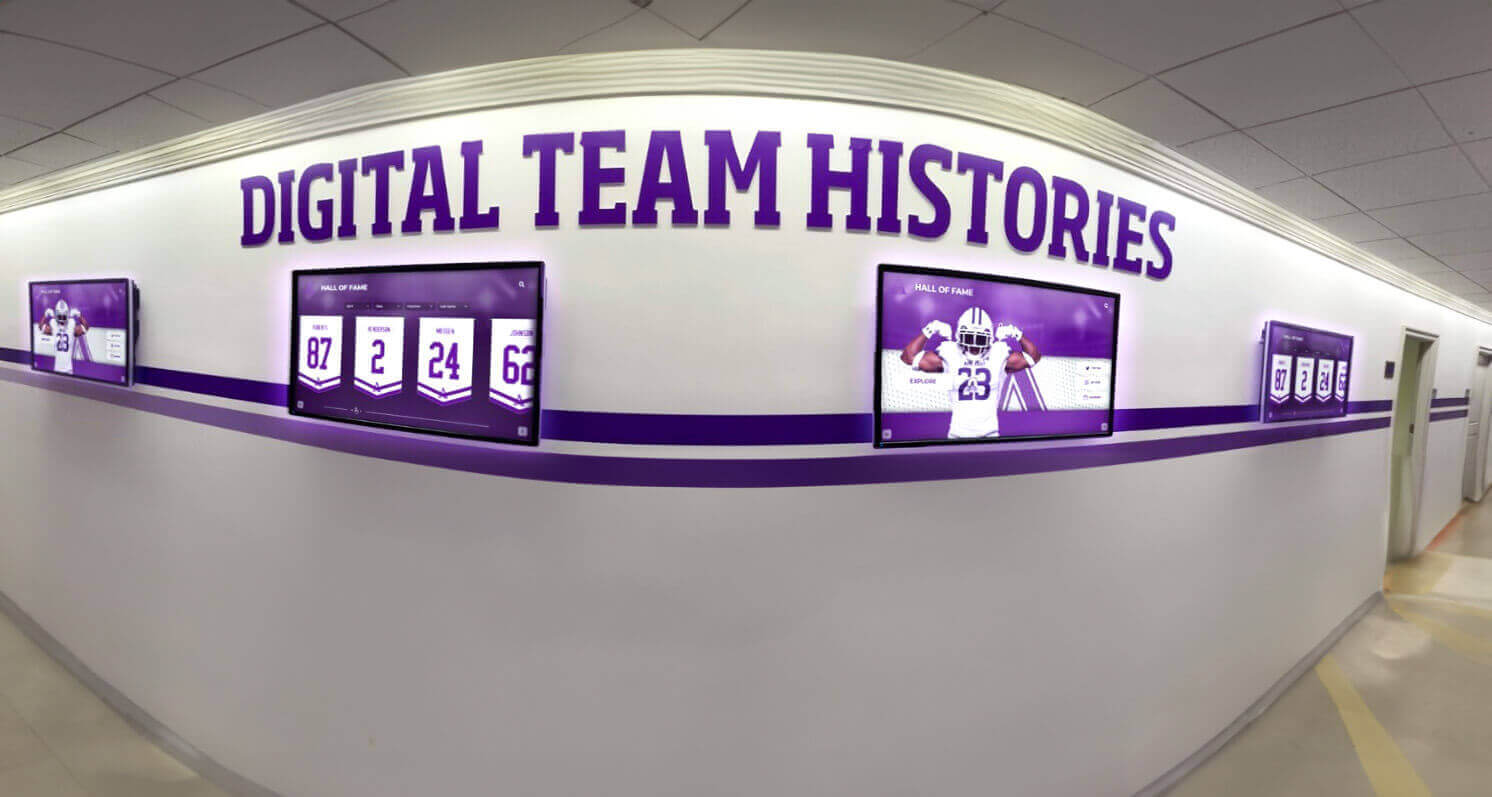
Planning Comprehensive Partnership Recognition Programs
Successful recognition of community partnerships and local sponsors requires systematic planning addressing strategic objectives, diverse stakeholder needs, and sustainable implementation approaches.
Establishing Recognition Tiers and Categories
Thoughtful recognition tier structures ensure all partners receive appropriate acknowledgment while clearly communicating pathways to deeper engagement that development staff can reference during cultivation conversations.
Financial Sponsorship Levels: Many organizations structure primary recognition around annual contribution tiers. Common structures include Title Sponsors ($25,000+), Premier Partners ($10,000-$24,999), Gold Sponsors ($5,000-$9,999), Silver Supporters ($2,500-$4,999), Bronze Contributors ($1,000-$2,499), and Community Friends ($250-$999). Each tier receives progressively enhanced recognition benefits ensuring proportional acknowledgment while maintaining incentives for increased investment.
In-Kind Contribution Recognition: Beyond financial support, in-kind partnerships deserve equivalent acknowledgment. Establish valuation methodologies for goods and services received, create recognition categories specifically for in-kind partners, consider both one-time contributions and ongoing support relationships, and acknowledge partnership value beyond simple dollar equivalents including strategic importance and community visibility created.
Volunteer and Service Partnerships: Organizations providing volunteer support, facility sharing, or collaborative programming should receive recognition distinct from financial tiers. Acknowledge organizational volunteer commitments, recognize partnership duration and consistency, highlight specific programs enabled through partnerships, and celebrate leadership individuals within partner organizations who champion collaboration.
Multi-Year and Legacy Partnerships: Long-term partners deserve special recognition beyond annual giving tiers. Create legacy recognition for partnerships spanning decades, establish named opportunities for transformational multi-year commitments, celebrate multi-generational partnerships where families or businesses support across generations, and acknowledge cumulative lifetime partnership value that may exceed individual annual contributions.
Determining Recognition Formats and Channels
Modern partnership recognition succeeds through multi-channel approaches combining physical visibility with digital accessibility and social amplification.
Physical Recognition Displays: Traditional physical acknowledgment remains important for sponsors seeking tangible visibility in facilities they support. Options include prominent wall displays in high-traffic locations, sponsor boards at athletic facilities and performance venues, named spaces and facilities for major partnerships, recognition plaques on equipment or improvements sponsors funded, and branded elements integrated into facilities within partnership agreements.
However, physical displays face inherent limitations including fixed capacity that eventually fills completely, high costs for adding or updating recognition, lengthy timelines for fabrication and installation, inability to share detailed partnership stories or impact documentation, and limited accessibility for partners and community members unable to visit physical locations regularly.

Digital Interactive Recognition: Modern digital recognition displays overcome traditional limitations while creating engaging experiences. These systems provide unlimited capacity accommodating all partners regardless of giving level, instant updates adding new partners immediately without fabrication delays, rich multimedia profiles including logos, photos, videos, and detailed partnership descriptions, searchable interfaces enabling partners to find themselves easily, remote web access ensuring partners can share recognition beyond single physical location, and comprehensive analytics tracking engagement and recognition effectiveness.
Web-Based Recognition Portals: Complementing physical displays, web-accessible recognition extends visibility. Create dedicated partnership pages on organizational websites, develop searchable sponsor directories, enable social sharing allowing partners to promote their community involvement, provide downloadable recognition materials partners can use in their own marketing, and offer permanent URLs for individual partnership profiles facilitating direct sharing with stakeholders.
Social Media and Digital Communication Recognition: Regular acknowledgment through organizational communication channels maintains visibility beyond static displays. Feature partner spotlights in newsletters and blogs, create social media content celebrating specific partnerships, develop video testimonials from partnership leaders, highlight impact stories showing how support translates to outcomes, and encourage tagged content allowing partner engagement and amplification.
Creating Compelling Partnership Profiles and Content
Beyond listing sponsor names and logos, effective recognition tells compelling stories demonstrating partnership value and impact while honoring contributors meaningfully.
Essential Profile Information: Every partnership profile should include partner name and logo with appropriate branding, recognition level and partnership duration, specific programs, facilities, or initiatives supported, key contact or champion individual when appropriate, and acknowledgment statement describing partnership significance.
Enhanced Content Elements: Richer profiles that create deeper engagement include partnership origin stories explaining how relationships began, impact documentation showing outcomes enabled by support, quotes from partnership leaders sharing motivations and perspectives, photos showing partners engaging with programs they support, video content featuring partners or beneficiaries, and data visualizations demonstrating support scope and impact when appropriate.
Partnership Impact Documentation: Connect sponsor recognition to tangible outcomes by showcasing student athletes who benefited from sponsored programs, facility improvements funded through partnerships, community members served through sponsored initiatives, scholarship recipients supported by partner contributions, and program expansion enabled by reliable partnership support. This impact connection demonstrates to both current and prospective partners that support creates meaningful difference rather than simply funding operational overhead.
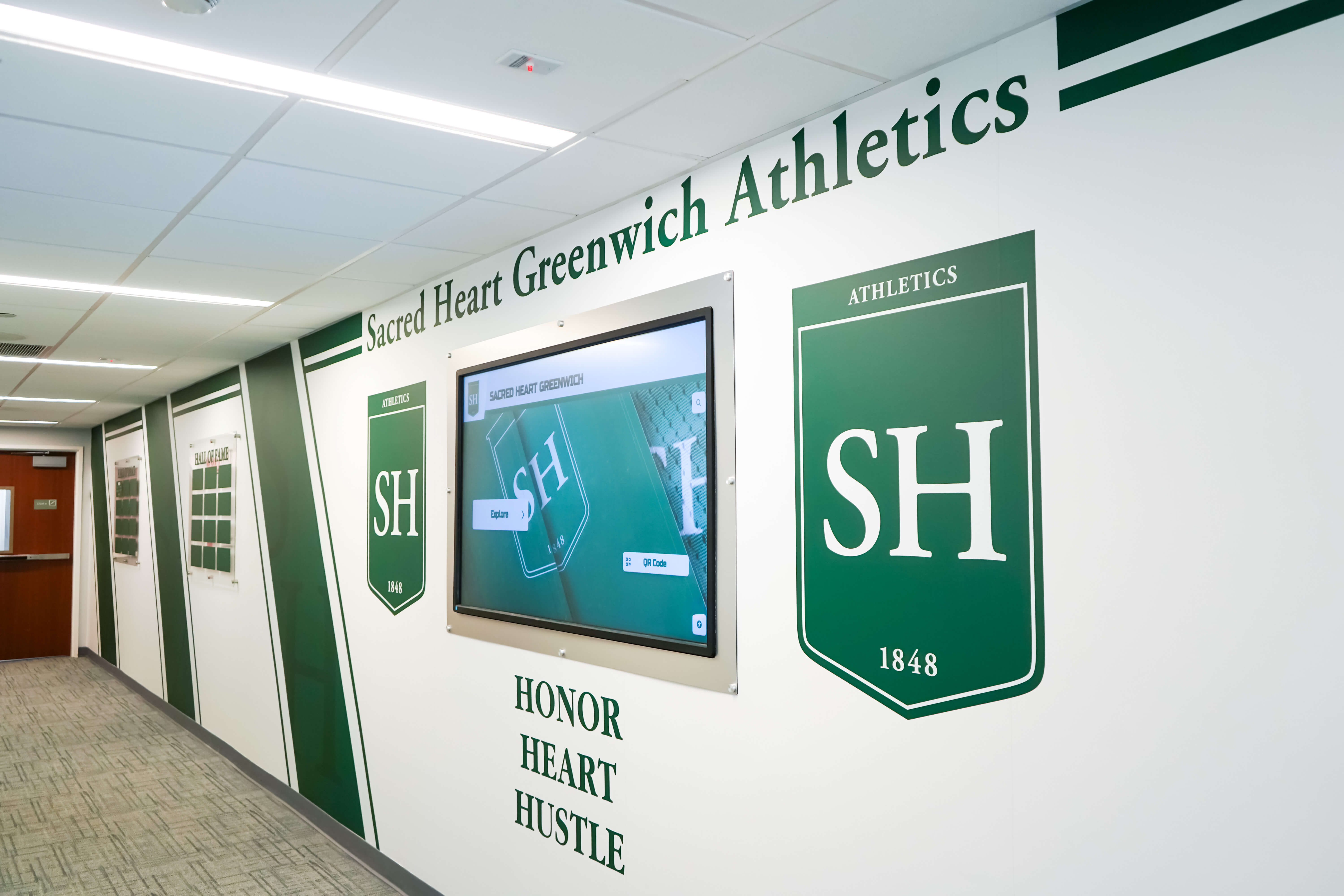
Implementing Partnership Recognition Systems
Successful partnership recognition requires systematic implementation approaches addressing technology selection, content development, launch strategies, and ongoing management.
Selecting Recognition Technology and Platforms
Organizations must choose recognition systems balancing capabilities, costs, ease of use, and long-term sustainability.
Hardware Considerations for Digital Displays: If implementing physical digital recognition, select appropriate hardware including commercial-grade touchscreens rated for continuous operation (not consumer displays), screen sizes appropriate for viewing distances and space constraints, mounting solutions (wall-mounted, freestanding kiosks, or custom enclosures), network connectivity (hardwired Ethernet preferred over WiFi for reliability), and installation quality ensuring professional appearance and ADA compliance.
Software Platform Requirements: Purpose-built recognition platforms should offer intuitive content management requiring no coding expertise, flexible templating accommodating varied partnership types and content needs, multimedia support handling logos, photos, videos, and documents, search and filtering enabling visitors to find specific partners, mobile responsiveness ensuring content displays correctly on all devices, cloud-based hosting eliminating institutional server requirements, and reasonable total cost of ownership including ongoing licensing and support.
Resources on digital recognition display implementation provide comprehensive frameworks for hardware selection, vendor evaluation, and successful technology deployment ensuring systems serve partnership recognition needs effectively across years of organizational growth.
Integration with Existing Systems: The best recognition platforms integrate with systems organizations already use including fundraising databases (automatically syncing partnership data), website content management systems (embedding recognition on institutional sites), social media platforms (facilitating content sharing and partner engagement), email marketing tools (incorporating recognition into communications), and analytics platforms (tracking recognition engagement and effectiveness).
Developing Partnership Recognition Content
Comprehensive content development transforms recognition systems from simple sponsor lists into engaging experiences that honor partners while strengthening relationships.
Content Planning and Organization: Begin by inventorying all partnership relationships deserving recognition including current sponsors at all levels, in-kind contributors, volunteer organizational partnerships, legacy and long-term partners, and historical partnerships worth documenting. Organize content into logical categories aligned with recognition tiers, support types (financial, in-kind, volunteer), program areas supported, and partnership duration or legacy status.
Content Creation Process: Systematically develop partnership profiles through direct outreach requesting updated information, logos, photos, and partnership perspectives, research using organizational records to document partnership history and impact, collaboration with program staff to connect partnerships to specific outcomes and beneficiaries, photography capturing partners engaging with programs they support, and quality control ensuring accuracy, appropriate branding, and consistent presentation standards.
Maintaining Content Quality Standards: Establish guidelines for logo resolution and formatting requirements, writing style maintaining consistent professional tone, fact verification ensuring all claims about partnerships are accurate, legal review of any claims about partner businesses or services, and accessibility compliance ensuring content works for disabled visitors.
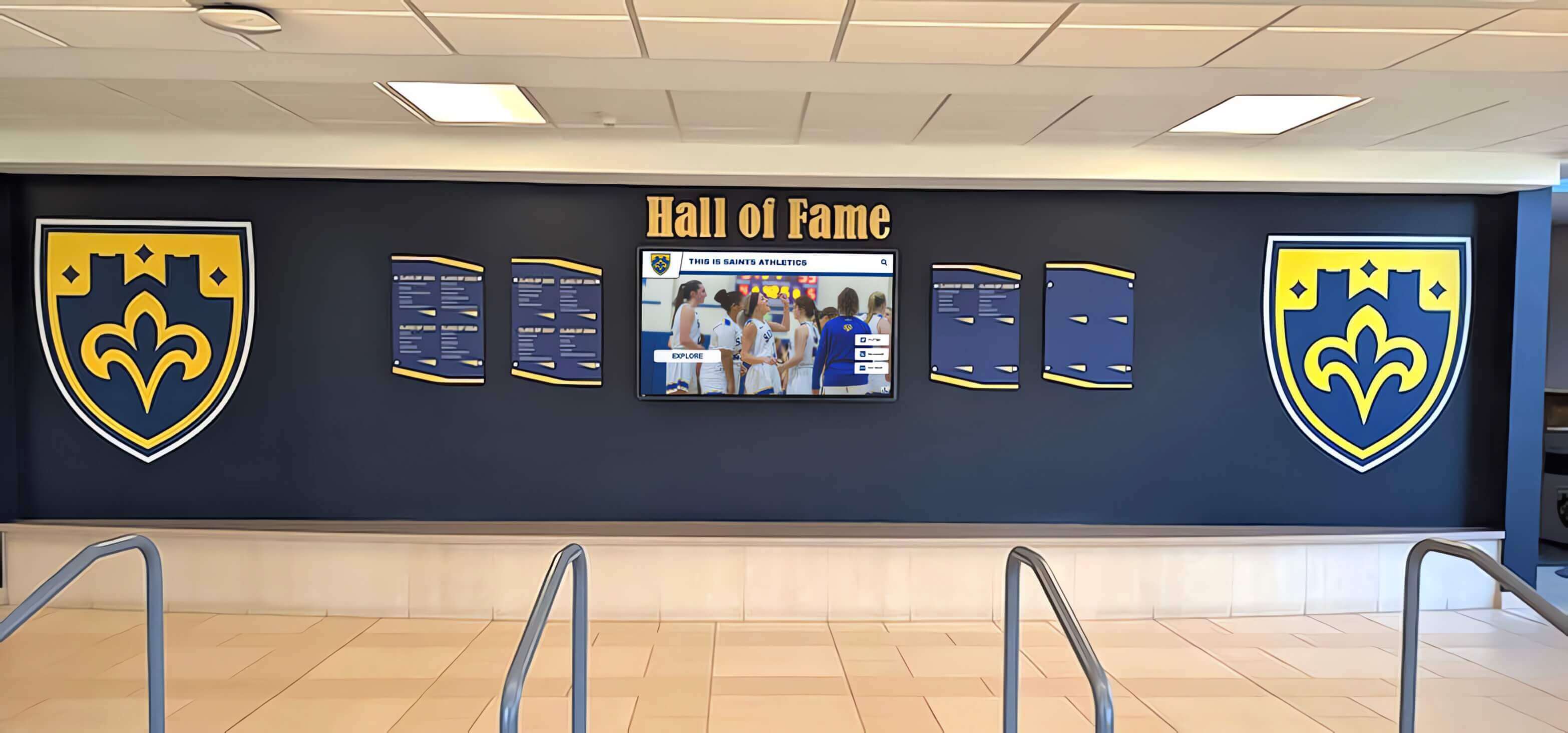
Launching Recognition Programs Effectively
Strategic launches generate awareness, celebrate partners, and establish recognition programs as valued organizational priorities.
Soft Launch and Testing: Before public unveiling, conduct limited release with select stakeholders to identify any technical issues or content problems, gather feedback from pilot users about functionality and presentation, verify all partner information displays correctly without errors, test search and filtering capabilities ensuring partners can find themselves, and refine based on testing results before wider community release.
Public Launch Events: Formal unveiling creates awareness and demonstrates organizational commitment to partnership recognition. Host recognition ceremonies with partner attendance, invite organizational leadership and board members to participate, engage local media for publicity coverage, promote through organizational communications and social channels, demonstrate recognition system features encouraging exploration, and provide partners with materials they can use to promote their community involvement.
Partner Communication and Onboarding: Ensure partners understand and can access recognition through direct outreach announcing recognition programs, personalized links to individual partnership profiles, instructions for accessing and sharing recognition, invitations to provide additional content or updates, and contact information for recognition program administrators.
Sustaining Partnership Recognition Excellence
Long-term recognition program success requires ongoing attention maintaining relevance, accuracy, and value across years of partnership evolution.
Regular Updates and Maintenance
Recognition currency requires systematic processes keeping content fresh, accurate, and aligned with current partnership relationships.
New Partnership Recognition Cadence: Establish clear timelines for adding new partnership recognition including immediate updates for major new partnerships, weekly reviews during active sponsorship campaigns, monthly comprehensive updates ensuring no partners overlooked, quarterly content enhancement expanding historical profiles, and annual complete audits verifying accuracy and relevance.
Partnership Level Tracking and Updates: Maintain accurate recognition as partnership levels change by monitoring annual renewal and upgrade patterns, adjusting recognition tiers when partnerships increase or decrease, updating cumulative giving totals for lifetime recognition, transitioning expired partnerships to alumni/historical categories when appropriate, and celebrating milestone anniversaries and partnership longevity.
Content Expansion and Enhancement: Continuously improve partnership recognition by adding impact stories as outcomes become evident, incorporating partner testimonials and perspectives, updating photos and videos showing ongoing engagement, documenting new programs or facilities enabled by partnerships, and expanding historical context for long-term relationships.
Engaging Partners Through Recognition
The best recognition systems create ongoing touchpoints strengthening relationships beyond initial acknowledgment.
Partner Involvement in Content: Invite partner contributions to recognition programs including updated information and branding as businesses evolve, photos from their engagement with programs they support, testimonials sharing perspectives on why they invest in your organization, participation in video content or case studies, and suggestions for enhanced recognition features or improvements.
Recognition Events and Programming: Maintain partner engagement through special experiences including annual partner appreciation events, exclusive preview opportunities for new facilities or programs, recognition in event programs and publications, VIP experiences at competitions, performances, or activities, and campaign kickoffs highlighting partnership opportunities while celebrating existing supporters.

Social Amplification of Recognition: Extend recognition reach beyond your immediate community through regular partner spotlights on organizational social channels, tagged content enabling partner engagement and sharing, creation of shareable graphics partners can use in their marketing, partnership anniversary celebrations highlighting long-term relationships, and impact stories connecting partner support to visible outcomes.
Measuring Recognition Program Effectiveness
Understanding recognition program impact requires tracking specific metrics demonstrating value to organizational leadership while identifying improvement opportunities.
Partnership Retention and Growth Metrics: Track renewal rates comparing recognized versus minimally acknowledged partners, average partnership duration and lifetime value trends, upgrade rates from lower to higher recognition tiers, new partner acquisition rates and sources, and ratio of partnership revenue to recognition program costs demonstrating ROI.
Engagement Analytics: For digital recognition systems, monitor unique visitor counts revealing overall reach, session duration indicating depth of engagement, most-viewed partnership profiles showing community interest, search terms revealing how people discover content, and social sharing metrics demonstrating amplification beyond immediate audience.
Partner Satisfaction Assessment: Systematically gather partner feedback through annual satisfaction surveys assessing recognition quality, testimonials and referrals indicating strong partnership experiences, participation rates in partner events and programs, voluntary content contributions suggesting engagement, and renewal conversations revealing partner perspectives about recognition value.
Community Awareness Indicators: Assess whether recognition programs successfully communicate community support through surveys measuring awareness of major partnerships, event attendance by partners and community members, media coverage of partnership programs and recognition, volunteer and donor recruitment referencing partnerships as credibility indicators, and prospective partner conversations citing visible recognition as confidence builders.
Best Practices for Different Organization Types
While partnership recognition principles remain consistent, implementation approaches should reflect unique characteristics of different organization types and their community contexts.
School and Educational Institution Partnership Recognition
Schools and colleges have distinct partnership recognition needs reflecting educational missions and diverse community relationships.
Athletic Program Sponsorships: Many schools receive significant support for athletic programs deserving appropriate recognition through stadium and facility signage visible during competitions, digital record boards highlighting both athletic achievements and sponsor support, game program acknowledgments reaching event attendees, social media recognition during sports seasons, and named tournaments or competitions honoring major partners.
Academic and Program Partnerships: Beyond athletics, schools build partnerships supporting academic programming, arts, technology, and special initiatives. Recognize these partnerships through recognition in academic buildings and facilities, acknowledgment in program materials and performances, student thank-you initiatives connecting beneficiaries to sponsors, career day and networking events providing reciprocal value, and impact reports demonstrating how support translates to educational outcomes.
Volunteer and Mentorship Partnerships: Community members and organizations providing volunteer support, mentorship, internships, or expertise deserve recognition equivalent to financial sponsorships through volunteer recognition programs celebrating consistent involvement, mentor acknowledgment connecting adult volunteers to student success, career pathway partnerships highlighting businesses supporting student development, and community service recognition honoring organizations enabling student service learning.

Civic Organization and Nonprofit Partnership Recognition
Civic organizations, service clubs, and nonprofits cultivate partnerships serving community needs and advancing organizational missions.
Collaborative Program Partnerships: Many nonprofits deliver services through partnerships with complementary organizations. Recognize these collaborations through joint recognition at partner facilities, shared promotional materials highlighting collaboration, case studies documenting partnership impact, co-branded program materials, and public acknowledgment at community events demonstrating collaborative ecosystem.
Corporate Volunteer Partnerships: Companies providing employee volunteer teams deserve recognition beyond financial contributions through volunteer team spotlights highlighting specific contributions, photo galleries showing volunteers in action, impact documentation quantifying volunteer hours and outcomes, thank-you events for volunteer teams, and opportunities for employees to see impact of their service.
Government and Foundation Partnerships: Public sector and philanthropic foundation partnerships often carry specific recognition requirements or preferences. Comply with grant acknowledgment requirements, recognize government partnerships appropriately avoiding political implications, acknowledge foundation support according to their preferences, document outcomes for accountability reporting, and maintain relationships beyond initial grant periods through ongoing communication and recognition.
Youth Sports and Community Athletics Partnership Recognition
Youth sports organizations, community athletic programs, and recreational leagues depend heavily on local business sponsorships and volunteer partnerships.
Field and Facility Naming Rights: Major partnerships often include naming rights deserving prominent recognition through signage visible to athletes, families, and community, dedication ceremonies celebrating partnership and facility improvements, digital displays documenting facility history and sponsor contributions, ongoing acknowledgment in promotional materials and communications, and periodic renewal celebrations maintaining visibility.
Season and Team Sponsorships: Annual sponsors supporting specific seasons or teams need consistent recognition throughout sponsorship periods through banners displayed during competitions and practices, team uniform and equipment acknowledgment (within league rules), social media recognition during season, parent communications thanking sponsors, and end-of-season appreciation events.
Tournament and Event Sponsorships: Special event sponsors deserve prominent recognition during events they support through signage throughout event venues, announcements during competitions, program and promotional material acknowledgment, social media coverage tagging sponsors, and post-event thank-you communications with photos and results.
Overcoming Common Partnership Recognition Challenges
Even well-intentioned recognition programs encounter obstacles requiring proactive solutions and strategic adjustments.
Challenge: Limited Resources for Recognition Programs
Many organizations want comprehensive partnership recognition but face budget and staff constraints.
Solutions: Maximize limited resources through phased implementation starting with highest-priority partnerships, volunteer committees assisting with recognition program management, digital platforms providing cost-effective scalability compared to physical manufacturing, sponsor contributions specifically for recognition programs, and shared recognition infrastructure across multiple organizational departments or programs.
Challenge: Balancing Recognition Equity Across Partnership Types
Organizations struggle ensuring all partnership forms receive appropriate acknowledgment without creating unhealthy competition or hierarchy.
Solutions: Create distinct recognition pathways for different partnership types (financial, in-kind, volunteer) rather than forcing false equivalencies, establish clear criteria for each recognition tier applied consistently, involve diverse stakeholders in recognition decisions ensuring balanced perspectives, communicate recognition philosophy emphasizing comprehensive community partnership ecosystem, and celebrate all partnership forms through varied recognition mechanisms.
Challenge: Maintaining Long-Term Recognition Accuracy
Partnership information changes as businesses evolve, relationships end, or contributions shift, yet many recognition systems become outdated.
Solutions: Implement cloud-based recognition platforms enabling easy updates, establish regular audit schedules reviewing all partnership information, assign specific staff or volunteer responsibility for recognition accuracy, create alumni or emeritus partnership categories for expired relationships worth documenting, and build recognition update processes into annual partnership renewal workflows.
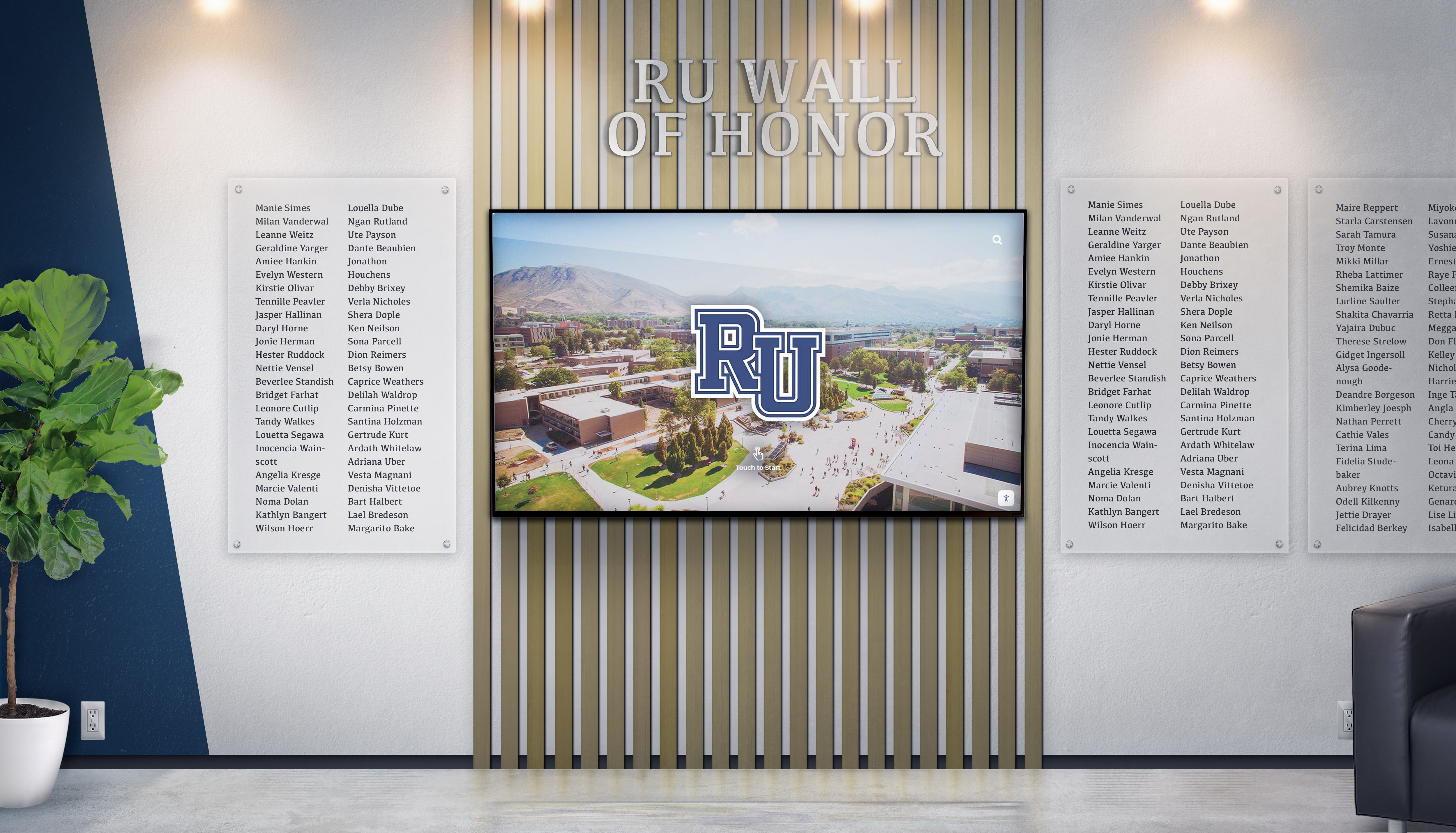
Challenge: Partner Dissatisfaction with Recognition
Occasionally partners feel their recognition doesn’t reflect their contribution or meet expectations established during solicitation.
Solutions: Document recognition benefits clearly during partnership solicitation, provide examples showing how recognition will appear, maintain open communication channels for partner feedback, respond quickly when partners raise concerns, offer additional recognition opportunities when appropriate, and conduct regular partner satisfaction assessments addressing issues before they escalate.
The Future of Partnership Recognition
Understanding emerging trends helps organizations implement recognition systems remaining relevant as expectations and technologies evolve.
Enhanced Personalization and Targeting
Future recognition platforms will enable personalized experiences where visitors see content relevant to their interests, AI recommendations suggest related partnerships based on viewing patterns, dynamic content prioritizes current partnerships during active campaigns, geolocation features highlight partners relevant to visitor locations, and preference tracking remembers individual user interests across sessions.
Expanded Integration and Automation
Recognition systems will increasingly integrate with broader organizational technology ecosystems including automatic partnership updates from fundraising databases, social media syndication sharing recognition automatically, marketing automation incorporating partnership content into campaigns, impact tracking connecting partnerships directly to outcome dashboards, and analytics integration providing comprehensive engagement insights.
Virtual and Augmented Reality Recognition
Emerging technologies will create immersive partnership recognition experiences including virtual facility tours showing sponsor-funded improvements, augmented reality experiences activated by scanning physical displays, interactive timelines documenting partnership evolution over decades, 3D visualizations showing impact of partner support, and gamification elements encouraging exploration of partnership stories.
Conclusion: Building Sustainable Partnership Recognition Programs
Community partnerships and local sponsors provide essential support enabling organizations to serve their missions effectively. When these vital relationships receive appropriate, visible recognition through comprehensive programs, powerful outcomes emerge. Existing partners feel genuinely valued and renew commitments at higher rates. Prospective sponsors see evidence that your organization honors community investment and gain confidence joining. Most importantly, recognition strengthens the reciprocal relationships between institutions and communities, creating sustainable support ecosystems benefiting everyone involved.
Modern recognition approaches combining physical displays with digital platforms, rich multimedia content with searchable accessibility, and immediate updates with permanent documentation overcome the limitations of traditional methods. Organizations no longer face impossible choices about which partnerships to acknowledge due to physical space constraints. Digital recognition systems provide unlimited capacity ensuring every partner receives appropriate visibility regardless of contribution size.
Whether implementing your first partnership recognition program or modernizing existing approaches, the strategies outlined here provide actionable frameworks for creating recognition that strengthens relationships, inspires continued support, and demonstrates organizational commitment to partnership stewardship. Success requires understanding your specific partnership ecosystem, offering recognition proportional to diverse contribution types, telling compelling stories connecting partnerships to impact, leveraging appropriate technology, and maintaining recognition quality through ongoing attention and refinement.
Ready to transform how your organization recognizes community partnerships and local sponsors? Explore how Rocket Alumni Solutions provides comprehensive digital recognition platforms specifically designed for schools, athletic programs, civic organizations, and community institutions seeking to honor partners while building sustainable support relationships that strengthen communities across generations.
Every community partnership and local sponsor who invests in your organization’s success deserves recognition—not just those whose contributions happen to fit limited physical space. Modern recognition systems finally make comprehensive celebration possible, strengthening the vital partnerships that sustain community institutions and the programs they deliver.
